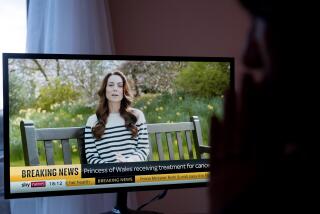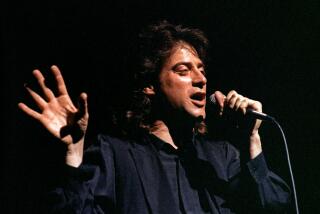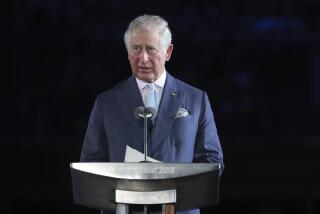Race to unearth a royal mystery
LEICESTER, ENGLAND — A parking lot, a parking lot! His kingdom for a parking lot?
OK, so those lines may not have quite the same ring as the immortal plea for a horse that Shakespeare gave Richard III as the desperate king’s final cry on the battlefield. But they could well prove more accurate.
Archaeologists have begun digging in the center of this historic city to locate Richard’s lost remains, in a quest to solve a mystery surrounding one of the most controversial and confounding monarchs in British history. If their hunch is right, the last English king to die in battle wound up trading his throne for a final resting place beneath what is now a small government parking lot here in Leicester.
Finding Richard’s bones, more than half a millennium after his death, could at last clear up some of the nagging questions and fanciful legends that have grown as thick around him as ivy on a tree. Was he, for instance, truly the “deform’d, unfinish’d” figure, often played as a hunchback, that Shakespeare took such delight in portraying?
Beyond that, though, there’s a sense that a man synonymous with royal villainy, but who actually introduced important social reforms, deserves a lot better in death. Unlike most English monarchs, Richard III has neither an official tomb nor identified remains to his name, a situation some on the dig feel ought to be rectified.
“It’s justice,” declared Richard Buckley of the University of Leicester, the chief archaeologist on the project, which is focused on what may be the ruins of a medieval friary buried under the parking lot.
His team is working with both limited time and space to unearth traces of the last of the Plantagenet kings, who reputedly locked up his two young nephews in the Tower of London and ordered their slaying so that he could grab the throne for himself.
As archaeological sites go, the parking lot is extremely small, paced off within a few seconds in either direction and hemmed in by buildings on all sides. But that even a tiny patch of un-built-up land exists in crowded downtown Leicester, let alone on the very spot the friary may have occupied, is an incredible stroke of luck.
Still, discovering evidence of the vanished structure and possibly Richard’s grave remains a tall order in such a short span of time. Excavation began Aug. 25, exactly 527 years after Richard was first buried, and after just 21/2 weeks is scheduled to wrap up Sunday, when the government’s patience for losing its parking lot runs out.
“It’s a long shot,” Buckley said. “It’s like a game of Battleship. You pick a square, H-3, and -- ‘Miss!’ ”
His hopes have been boosted by the emergence of bits of medieval ruins in two 6-foot-deep trenches, but he isn’t drawing any conclusions yet.
He isn’t taking any chances either. Just in case his team hits pay dirt, experts have already obtained a mouth swab from a man believed to be descended from Richard III’s sister, for use in comparing his DNA with that from any bones found on the site that might belong to the dead king. (As it happens, genetic profiling was pioneered at the University of Leicester.)
Perhaps fittingly for a ruler whose life reads like a Hollywood movie, the search for Richard’s remains was launched in large part by a scriptwriter, Philippa Langley, who has written a screenplay about him.
She commissioned an analysis of old maps of Leicester in an attempt to identify the old friary’s location, which led excited researchers to home in on the parking lot just off Grey Friars lane, almost in the shadow of the nearby cathedral. Leicester, an extremely diverse city of about 300,000 residents in central England, is one of Britain’s 10 most populous urban centers.
Historical accounts say that, after his defeat and death Aug. 22, 1485, by the forces of Henry Tudor (later Henry VII) at the Battle of Bosworth Field about 15 miles away, Richard’s enemies stripped his corpse and paraded it in Leicester before allowing Franciscan brothers to bury it with no pomp or ceremony.
As a person of exalted rank, Richard would probably have been interred close to the friary’s altar. Henry VII paid for an alabaster monument over the tomb, but both that and the friary were abandoned when his son, Henry VIII, shut down England’s monasteries.
A later marker at the grave site also disappeared, and the repository of Richard III’s mortal coil was eventually forgotten. A story even arose that his body had been exhumed and thrown into a nearby river, but recent research casts doubt on that idea.
“They were very religious during those times, and for them to do that would be out of the norm,” said Langley, who besides being a screenwriter is secretary of the Scottish branch of the Richard III Society.
She’s therefore a staunch member of the camp that wants to rehabilitate Richard from the image of the scheming, treacherous brute indelibly characterized -- or caricatured -- by Shakespeare. Revisionists take a page instead from the 1951 detective classic “The Daughter of Time” by Josephine Tey, which depicts Richard as an able, respected and unfairly maligned leader. (The book’s title derives from philosopher Francis Bacon’s observation that “truth is rightly named the daughter of time.”)
Richard’s supporters note that it was he who popularized the presumption of innocence and the granting of bail in matters of justice, linchpins of the British and American legal systems.
“For this king to then suffer the great injustice that we potentially feel he has been given, it’s the irony of ironies,” Langley said, shaking her head. “It makes me cross.”
Then again, Richard would hardly exert such a hold on the public imagination if not for Shakespeare’s famous tragedy.
In fact, the hunt for Richard’s remains comes amid a flurry of renewed interest in the play.
Last year in London, Oscar winner Kevin Spacey was widely acclaimed for his portrayal of a snarling, scenery-chewing Richard, with nary a sniff of critical disdain over his American accent. Currently, Mark Rylance, perhaps Britain’s greatest living stage actor, is essaying the role in a new, also well-received production.
In a potentially good omen for Buckley and Langley, archaeologists revealed in 2010 that they had definitively identified the site of the Battle of Bosworth Field, whose exact location had long been a source of debate.
The announcement followed the discovery of numerous lead balls used as shot by Richard’s troops (and possibly Henry’s), pieces of medieval armor and, most remarkable of all, a badge of pure silver, barely an inch long, in the shape of a boar: Richard III’s personal emblem. The badge probably belonged to one of his closest confidants, who was at his side in battle that day.
“That was the key piece,” said archaeologist Glenn Foard.
He’s not involved in the investigation of what happened next to the vanquished king. But he wishes Buckley and the others well.
“That’s closing the loop. It’s the last piece of the jigsaw,” Foard said. “But whether they’ll find it is another story.”
--
More to Read
Sign up for Essential California
The most important California stories and recommendations in your inbox every morning.
You may occasionally receive promotional content from the Los Angeles Times.











